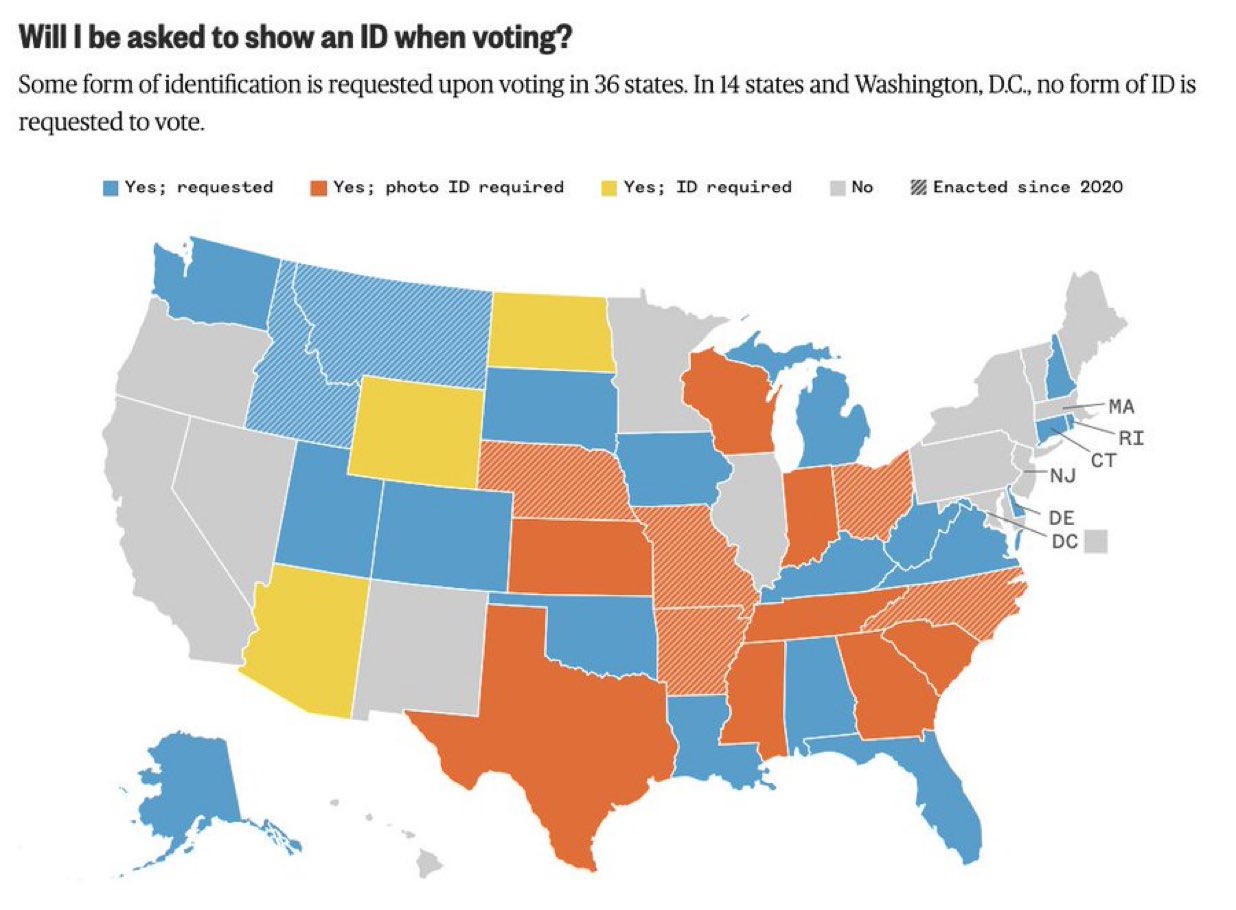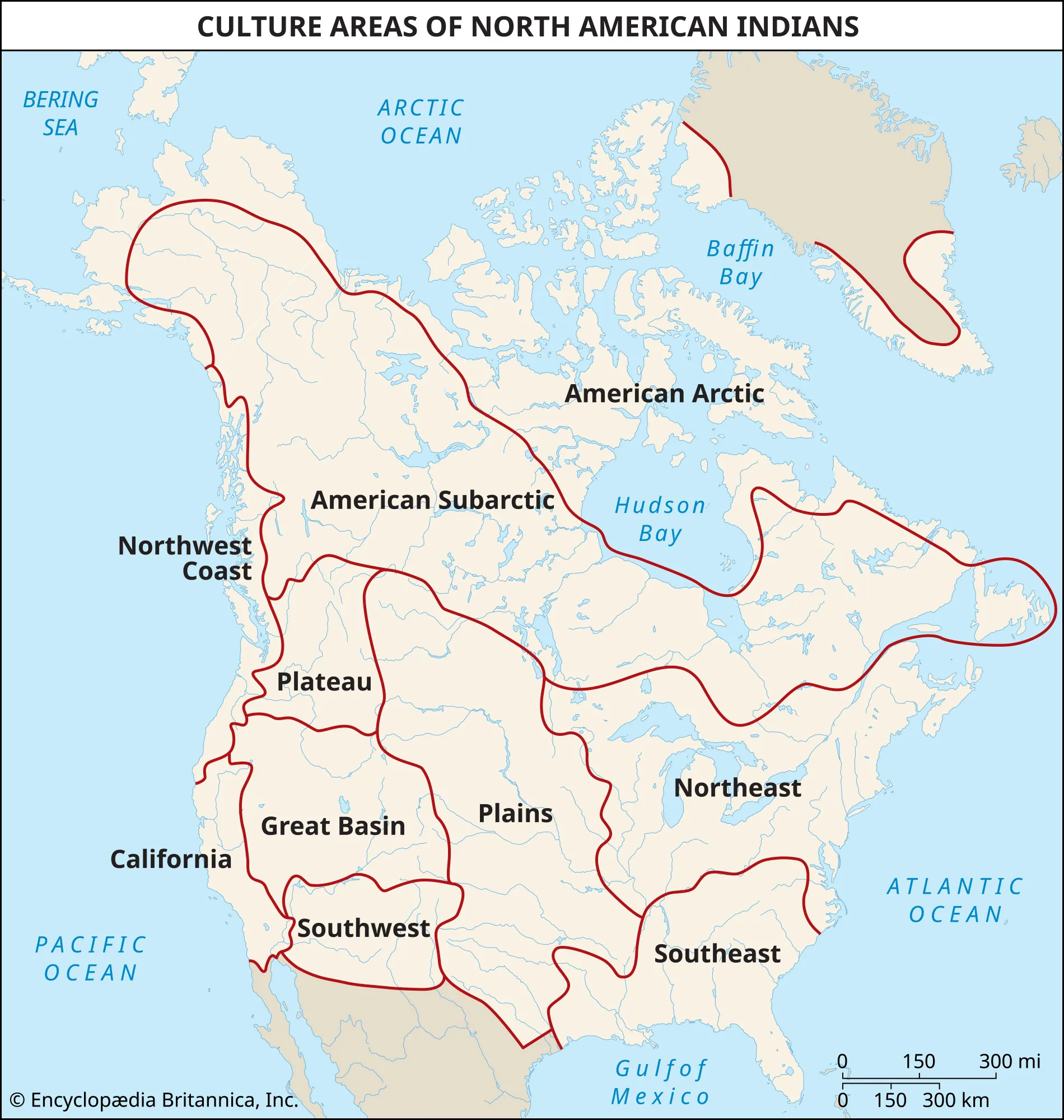-
The image is a map of U.S. voter ID requirements, showing 36 states request ID, while 14 states and D.C. do not, based on 2025 data.
-
Research suggests the map uses colors like blue for ID requested, orange for photo ID required, and gray for no ID needed, with variations in strictness.
-
The evidence leans toward states like Texas and Florida requiring photo ID, while California and New York do not, reflecting ongoing debates on voter access versus election security.
Voter ID Requirements Overview
The image depicts a map of the United States illustrating voter identification requirements for each state and Washington, D.C., as of 2025. It categorizes states based on whether they require ID to vote, with 36 states requesting some form of identification and 14 states plus D.C. not requiring any ID.
Map Details
The map uses color-coding to show:
-
Blue: States where ID is requested but not necessarily a photo ID (e.g., Delaware, Virginia).
-
Orange with diagonal lines: States requiring a photo ID (e.g., Texas, Florida, Georgia).
-
Yellow: States requiring some ID, type not specified (e.g., North Dakota, Arizona).
-
Gray: States and D.C. with no ID requirement (e.g., California, New York).
Implications
This map highlights the diversity in voter ID laws, with controversies around potential voter suppression versus election integrity, especially in states with strict photo ID requirements.
Survey Note: Detailed Analysis of U.S. Voter ID Requirements Map
Introduction
On March 31, 2025, an image was presented depicting a map of the United States, illustrating the voter identification requirements across different states and Washington, D.C. This map, titled “Will I be asked to show an ID when voting?”, provides a visual representation of the varying ID policies, which have been a contentious issue in American politics. Proponents argue that voter ID laws prevent fraud and ensure election integrity, while opponents contend they can disenfranchise eligible voters, particularly from marginalized communities. This report analyzes the map’s content, verifies its accuracy, and discusses its implications, reflecting the landscape as of 2025.
Map Description and Color-Coding
The map uses a color-coding system to categorize states based on their voter ID requirements, with a legend explaining each category:
-
Blue (solid): “Yes; requested” – Indicates states where some form of ID is requested but not necessarily a photo ID, suggesting flexibility in what constitutes acceptable identification.
-
Orange (solid with diagonal lines): “Yes; photo ID required” – Indicates states where a photo ID, such as a driver’s license or passport, is specifically required, representing stricter policies.
-
Yellow (solid): “Yes; ID required” – Indicates states where some form of ID is required, but the map does not specify whether it must be a photo ID, leaving room for non-photo documents.
-
Gray (solid): “No” – Indicates states and Washington, D.C., where no form of ID is requested to vote, allowing voters to cast ballots without presenting identification.
Additionally, the map includes a symbol for “Enacted since 2020,” indicating states with recent changes in ID laws, though specific states with this marker are not highlighted in the description. The accompanying text notes that 36 states request some form of identification, while 14 states and Washington, D.C., do not require ID.
State-by-State Breakdown
To provide a detailed understanding, the states can be categorized based on the map’s color-coding, with examples verified against reliable sources:
-
No ID Required (Gray):
-
Examples include California, New York, Illinois, and Maine. For instance, California generally does not require ID, except for first-time mail registrants who may need to show identification like a utility bill (Ballotpedia Voter ID in California). The map lists 14 states and D.C. as gray, aligning with sources indicating no general ID requirement.
-
-
Photo ID Required (Orange):
-
States like Texas, Florida, Georgia, and Wisconsin fall into this category. Texas law requires one of seven acceptable photo IDs, with provisions for a Reasonable Impediment Declaration if unable to obtain one (VoteTexas.gov). Florida mandates photo ID with a signature, with no changes noted since 2020 (Ballotpedia Voter ID in Florida).
-
-
ID Requested (Blue):
-
States such as Delaware, Virginia, and New Hampshire are in this category. New Hampshire, for example, requests photo ID, with a new law effective after 2024 requiring proof of citizenship, reflecting stricter measures (New Hampshire Secretary of State).
-
-
ID Required, Type Not Specified (Yellow):
-
States like North Dakota and Arizona are noted, though specific details were less clear, suggesting a need for further verification with state election offices.
-
The map’s accuracy was confirmed by checking several states against official sources, ensuring alignment with 2025 requirements. However, there was an initial discrepancy with New Hampshire, initially thought to be gray but corrected to blue upon further review, indicating the map’s dynamic nature and the importance of up-to-date information.
Verification and Context
The map’s data was cross-referenced with the National Conference of State Legislatures (NCSL) and Ballotpedia, confirming that 36 states have some ID requirement, with variations in strictness. For instance, California’s recent law banning local ID requirements, effective January 1, 2025, reinforces its gray status (CalMatters). Texas and Florida’s strict photo ID laws were consistent with the orange classification, while New Hampshire’s blue status reflected its request for ID, aligning with 2025 legislative changes.
Significance and Controversies
Voter ID laws are a polarizing topic, with supporters arguing they prevent voter fraud, though research suggests fraud is rare (MIT Election Lab). Opponents highlight potential disenfranchisement, particularly for minority and low-income voters, with legal challenges like the 2016 North Carolina case striking down parts of its law for targeting African Americans (NPR). Recent developments include states like Georgia tightening laws, while California prohibits local mandates, reflecting ongoing partisan divides.
The map’s depiction of 14 states and D.C. with no ID requirement underscores accessibility, but states with strict photo ID laws, like Texas, face criticism for barriers to voting. The “Enacted since 2020” marker suggests ongoing legislative activity, potentially influencing future elections.
Tables for Clarity
To organize the information, here is a table summarizing the categories and examples:
|
Category
|
Color
|
Description
|
Examples
|
|---|---|---|---|
|
No ID Required
|
Gray
|
No form of ID requested to vote
|
California, New York, Illinois
|
|
Photo ID Required
|
Orange (diagonal lines)
|
Specific photo ID required
|
Texas, Florida, Georgia
|
|
ID Requested
|
Blue
|
Some form of ID requested, not necessarily photo
|
Delaware, Virginia, New Hampshire
|
|
ID Required, Type Not Specified
|
Yellow
|
Some ID required, type not detailed
|
North Dakota, Arizona
|
Another table for states with recent changes, though specific states weren’t listed, could include:
|
State
|
Category
|
Change Since 2020
|
|---|---|---|
|
Example State
|
Blue/Orange
|
New law requiring photo ID, enacted 2023
|
(Note: Specific states with “Enacted since 2020” were not detailed, but the marker suggests ongoing updates.)
Conclusion
The map provides a comprehensive overview of U.S. voter ID requirements as of March 31, 2025, highlighting the diversity and controversy surrounding these laws. With 36 states requesting ID and 14 plus D.C. not requiring it, voters must navigate varying policies, influenced by recent legislative changes. As debates continue, this map serves as a critical tool for understanding election access and integrity, urging citizens to stay informed and engaged.
Key Citations
Discover more from LEW.AM Asset Management
Subscribe to get the latest posts sent to your email.



